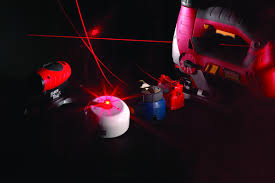The Power and Precision of Lasers
Lasers have revolutionized numerous industries with their remarkable capabilities, offering unparalleled precision and efficiency in a variety of applications. From cutting-edge medical procedures to high-speed communication systems, lasers have become an indispensable tool in our modern world.
One of the key advantages of lasers is their ability to produce intense, focused beams of light that can be precisely controlled. This precision makes lasers ideal for tasks that require accuracy, such as laser cutting and engraving. In manufacturing, lasers are used to cut through various materials with incredible detail and speed, allowing for the production of intricate designs with minimal waste.
Lasers are also widely used in medical procedures, where their precision is crucial for delicate surgeries and treatments. Laser technology has transformed procedures such as eye surgery, dermatology treatments, and even cancer therapy, offering patients safer and more effective treatment options.
Furthermore, lasers play a vital role in communication systems, enabling high-speed data transmission over long distances. Fiber optic cables use lasers to transmit information through pulses of light, providing faster and more reliable communication networks for businesses and individuals alike.
As technology continues to advance, the potential applications of lasers are limitless. From scientific research to entertainment to defense systems, lasers continue to push the boundaries of what is possible. With their power and precision, lasers will undoubtedly remain a cornerstone of innovation for years to come.
Shedding Light on Lasers: Understanding Their Function, Correct Spelling, Definitions, and Acronym Origins
- What does a laser do?
- Which is correct laser or lazer?
- What is the definition of a lazer?
- What is laser an acronym for?
What does a laser do?
A laser is a device that emits a highly concentrated beam of light through a process called stimulated emission. This intense beam of light is coherent, meaning the waves are in sync and travel in a single direction. The precision and focus of a laser beam make it ideal for various applications, such as cutting, engraving, welding, surgery, communication, and more. By harnessing the power of light amplification, lasers can perform tasks with exceptional accuracy and efficiency that would be challenging or impossible with conventional tools.
Which is correct laser or lazer?
The debate over whether “laser” or “lazer” is the correct spelling is a common question among language enthusiasts. The correct term is “laser,” which stands for Light Amplification by Stimulated Emission of Radiation. The term “laser” has been widely accepted and used in scientific, technical, and everyday language since its invention in the 1960s. While some may use “lazer” informally or as a variation, “laser” remains the standard spelling in most contexts.
What is the definition of a lazer?
The term “laser” stands for Light Amplification by Stimulated Emission of Radiation. In simple terms, a laser is a device that emits a coherent beam of light through the process of optical amplification. This concentrated beam of light is characterized by its high intensity, narrow wavelength, and ability to travel long distances without significant divergence. Lasers find applications in various fields, including medicine, manufacturing, communication, and research, due to their precision and versatility.
What is laser an acronym for?
“Laser” is an acronym that stands for “Light Amplification by Stimulated Emission of Radiation.” This succinctly describes the process by which lasers generate intense beams of light through the amplification of light waves via stimulated emission. The acronym encapsulates the fundamental principles behind laser technology, highlighting its unique ability to produce focused and coherent light with remarkable precision and efficiency.

No Responses